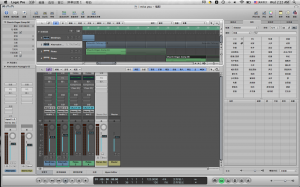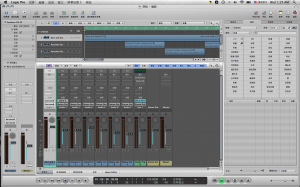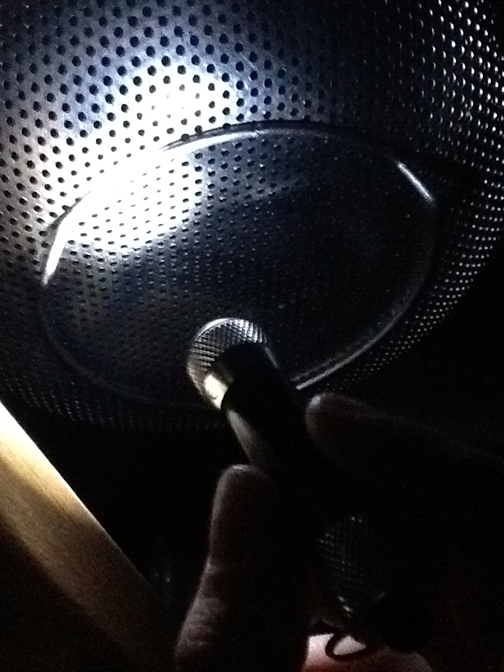Why We Need Things, Mihaly Csikszentmihalyi
This was a very poignant essay about why our society is so materialistic and what drives our desire to acquire things. Csikszentmihalyi’s main point is that humans need objects to stabilize and “transform the precariousness of consciousness into the solidity of things.” He believes objects give us stability at the present moment but have long-term consequences on our environment and our survival as a whole.
I agree with everything that Csikszentmihalyi said but would like to add my own view as to why we get things and why ultimately, if we do not sensor ourselves, it becomes very dangerous. The most frightening notion behind acquiring is that we DESERVE things, that we are ENTITLED to things. Is this not how wars begin, how endless territorial disputes last for generations and why we build missiles and bombs?
It is human nature to establish hierarchy because that creates stability in our society. We need someone to govern and others to follow, someone to talk and someone to listen. What is not natural is to accept that someone is better, more important than ourselves; we always strive to show that we matter; that we have a purpose. The way we tend show that is through physical objects. We can say, “Look! I am interesting, I traveled around the world, and here is a scarf I bought in Spain. ”Or, “I am important, look at my BMW.” Or, “I am smarter and stronger than you, I will show you by building nuclear reactors.” Ultimately, our hyper competitive nature drives our desire to acquire objects in order to give us self worth, stability and purpose in our life.
Perhaps, my view makes it sound like there is no hope for humans, but I agree with Csikszentmihalyi when he says that the best cure for materialism is to “discipline consciousness” and more importantly, to create a stable environment by building relationships with others “from cradle to grave.” In other words, if we surround ourselves, and focus on, our family and close friends, we will have a stable sense of self and less desire to prove ourselves to the outside world.
The Computer Revolution, Alan Kay
Alan Kay’s talk about developing complex computer systems explored unsuccessful ways in which developers have been approaching programming and illustrates what the right approach is. Kay stresses that it is crucial not to get stuck in the same context but to “think grand,” to create a new context for what you are building. He defines a successful operating system as one that can build upon itself, one that does not stay on the same plane of simple optimization but instead moves in a new direction, morphs into a better version of itself, leveraging the new.
He compared programming to molecular biology where he used an e-coli bacterium to illustrate how primitive computers and our thinking can be. The thermal agitation in an e-coli cell allows it to duplicate at 4 times the speed of light. This kind of speed in unimaginable with computers making them “small, slow, stupid.” Kay’s point, and I hope I understood him correctly, is that the individual cells in a bacterium send signals throughout its structure very quickly, allowing the cells duplicate very efficiently within. Like in a bacterium, there is an internal structure in a computer that communicates within itself. The programs inside are the cells that should be able to grow, improve within themselves. He used the Pink Team at Macintosh as an example of what happens when programmers depend on external languages to build new ones. Copland’s Pink Team tried to build a new operating system for Macintosh using C++. This is fundamentally wrong and inefficient. Ultimately, Pink’s vision never came to fruition because the language could not sustain itself and was not conducive to morphing within its own structure.
Thinking “grand” means building an autonomous, sustainable structure for a program and then taking it to the next level. If the functionality of a program relies on external sources, it will be difficult to keep up with the updates and changes of all those external sources. Once compatibility of a program is compromised what will happen is programmers will try to cover up inadequacies with additional sources, more code, more complexity. In the end, the program will collapse on itself.
The Design of Everyday Things, Donald Norman
This excerpt explores how things are used and what separates good design from bad design. Ultimately, Norman believes good design should chew everything up for the user, that objects and interfaces around us need to be totally seamless and require as little thought as possible. I couldn’t help but play the devil’s advocate as I was reading this piece. Maybe this thought is still very abstract, but I kept questioning why it is ok for for our brain to turn off when we are using non-digital objects such as bikes, forks, drawers and switches and not ok for computerized, programmed things to do the same? If all interfaces are equal, shouldn’t Norman’s principle of “good design” apply universally?
So, why not build chips in our brains that will completely leave all discretion to technology to figure things out for us. After all, according to Norman, thinking is too time consuming and annoying.



















Comments!